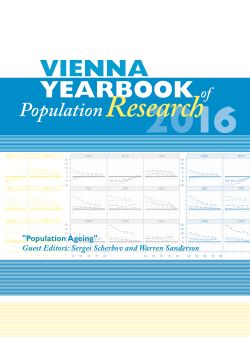
Vienna Yearbook of Population Research 2016, pp. 007-40, 2024/12/12
Special issue on “Population ageing”

Aging is a complex, multifaceted phenomenon. In this paper, we provide an integrative approach that allows for the study of numerous dimensions of aging within a unified framework. The framework is based on the translation of quantitative measures of people’s characteristics into a new form of age measure, called “alpha-age.” Two individuals who have the same alpha-age have the same level of the characteristic under consideration. Alpha-ages are easy to understand and analyze because they are measured in years, just like chronological age. Indeed, chronological age is just an alpha-age for which the characteristic is the number of years the person has lived. An advantage of using the alpha-age measure is that it allows for the translation of different characteristics into years of age. Expressing multiple characteristics that are otherwise difficult to compare using a common metric makes it possible to conduct comparative analyses that previously were not feasible. We demonstrate the integrative power of alpha-ages through a set of examples in which we present alpha-ages based on remaining life expectancy, fiveyear survival rates (a rough objective indicator of health), self-reported health, and hand grip strength. We also show how alpha-ages can be used to compute old-age thresholds that vary over time and place, and how alpha-ages can be used to compute intergenerationally equitable normal pension ages. By allowing for the consistent quantitative measurement of multiple aspects of aging, the integrative approach presented here provides us with new insights into the process of population aging.
Keywords: Demography; Aging; Population